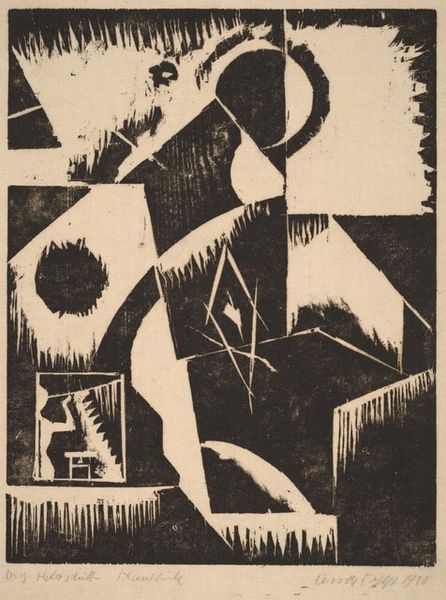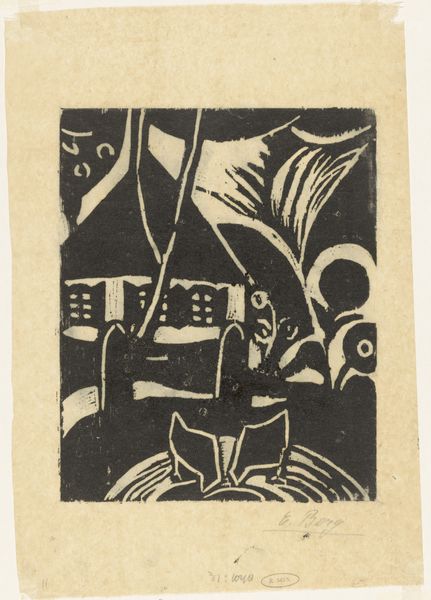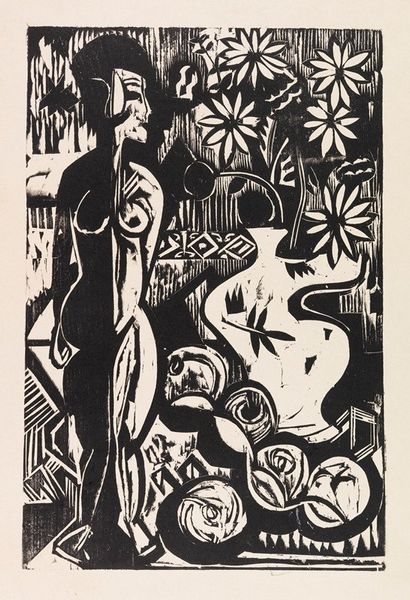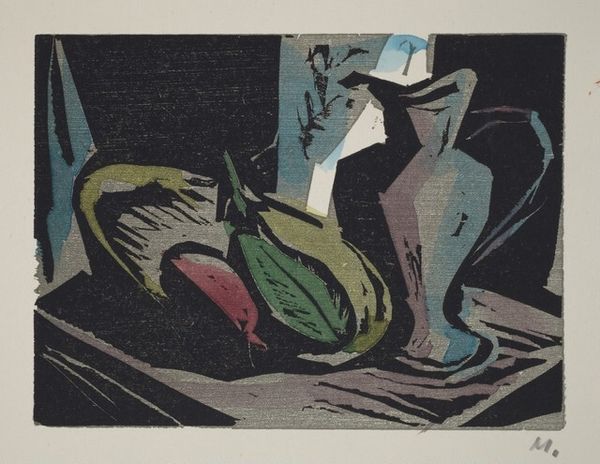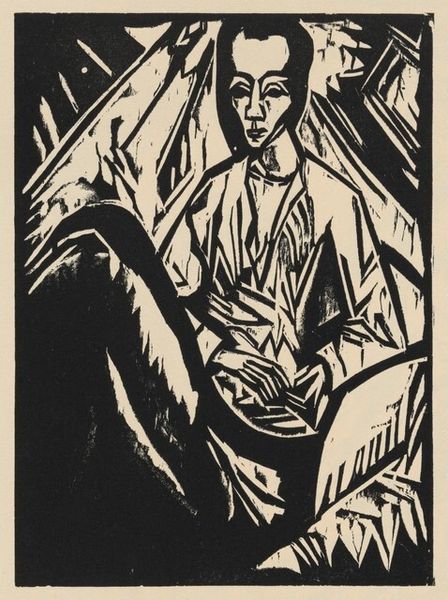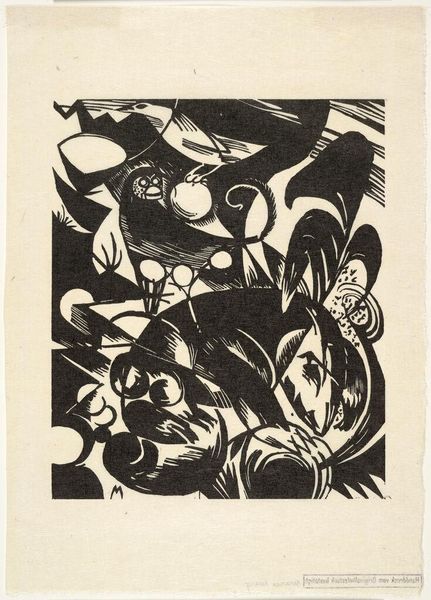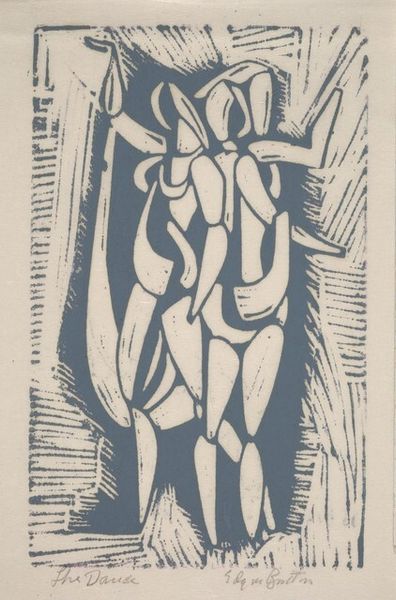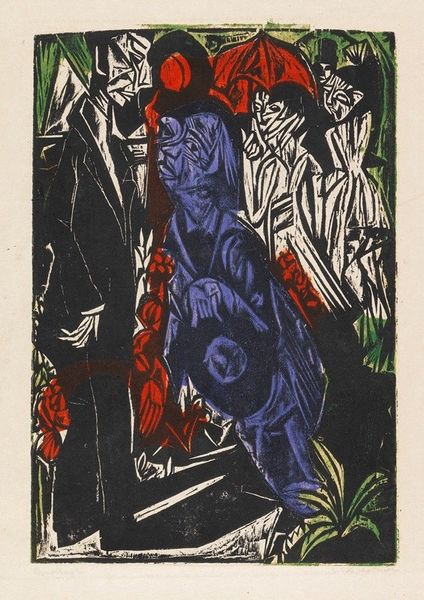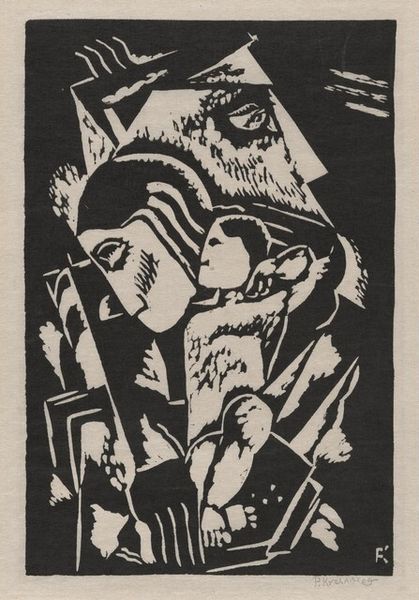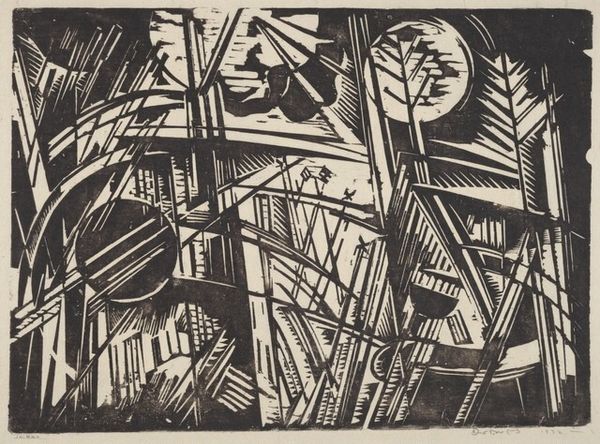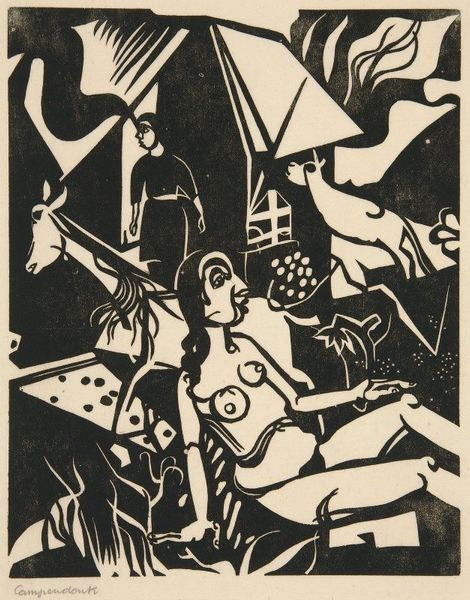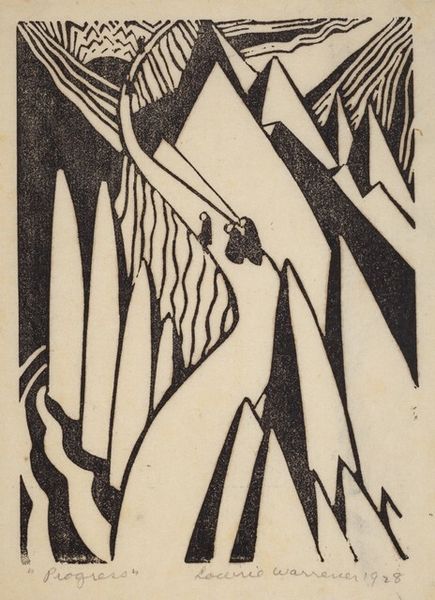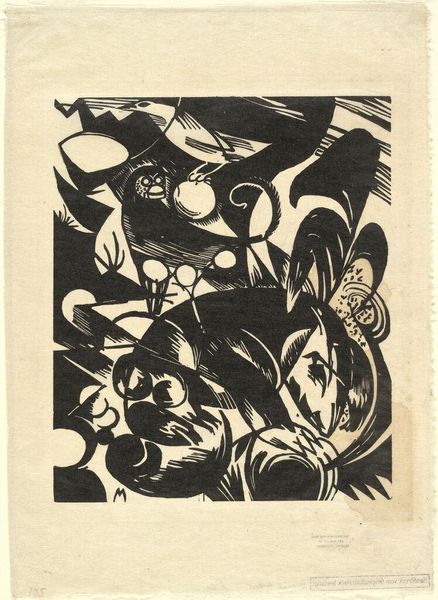
Copyright: National Gallery of Art: CC0 1.0
Curator: Here we have Hans Alexander Mueller's "New Year's Card" from 1951, rendered in a bold woodcut print. Editor: It's strikingly direct, isn’t it? The sharp angles and contrasting tones give a mood that's both celebratory and strangely austere. It has a modern sensibility that speaks to the rebuilding period after WWII. Curator: Exactly. Mueller, deeply influenced by Expressionism and the broader currents of Modernism, embraced printmaking for its accessibility and democratic spirit. Consider the socio-economic conditions of post-war Germany—artists like Mueller were trying to make art that spoke to the masses, rather than being confined to elite circles. Editor: I see symbols of renewal, even in the starkness. The fish could represent abundance, the fruit—pear-shaped I would say—fertility. That single flower hints at the beauty that can arise from difficult circumstances. Does the artist identify what flower this is? Curator: What's particularly interesting is the ambiguity he creates, blending domestic comfort—the still life elements—with the anxieties of the time. There's an intentional avoidance of easy optimism. The heavy blacks seem almost ominous and also represent regeneration to overcome the past. Editor: The rough texture inherent to woodcut reinforces that feeling, like the marks of time itself etched into the image. I wonder about the recipients of this card; it carries a depth beyond simple holiday cheer, one must consider the implications of it. It is an intense exchange with its viewers. Curator: Indeed. Mueller wasn’t simply offering seasonal greetings; he was reflecting on the complex emotions of a nation in transition. It's a testament to how even seemingly simple forms like New Year's cards could become vehicles for profound commentary and artistic statement. The distribution and circulation of cards like these serve as important communication. Editor: A reminder that visual symbols carry history, encoded for those who know how to read them. Makes you appreciate the enduring power of an image, doesn't it?
Comments
No comments
Be the first to comment and join the conversation on the ultimate creative platform.
